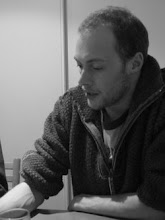'The daily press is the evil principle of the modern world, and time will only serve to disclose this fact with greater and greater clearness. The capacity of the newspaper for degeneration is sophistically without limit, since it can always sink lower and lower in its choice of readers. At last it will stir up all those dregs of humanity which no state of government can control.'
Soren Kierkegaard (1813-1855)
Soren Kierkegaard, a Danish philosopher and theologian, expressed this opinion in The Last Years, a collection of his journal entries between 1853 and 1855. How apt they were in the middle of the 19th Century, I do not know, but now, over 150 years later, they can have rarely resonated with such truth.
During the course of the last year we have, as always, seen a number of examples of journalists taking their journalistic license just a little bit too far. But, what we all witnessed thoughout the summer regarding the end of the world as soon as the LHC was switched on at CERN, made feeding time in the lion enclosure look like the height of hout-couture!
This problem of media attention for all the wrong reasons was similarly faced by astronomers 5 to 10 years ago. Pioneering work on the Cretaceous-Teriary impact by Walter Alvarez and others cemented the idea of cataclysmic asteroid impacts causing mass extinction events, in turn paving the way for enormous summer blockbusters such as Armageddon and Deep Impact. In the wake of these attention grabbers, every discovery of an asteroid with an Earth crossing obit (known as an NEOs - Near Earth Object) gained pages of dedicated coverage in the world's media. The end of the world was, seemingly, at hand.
In the short-term such publicity can be good for the scientists involved, but in the long-term its effect on the science can be disastrous. The general public have a relatively short attention span when compared to your average scientific experiment. Don't get me wrong, this isn't the scientist inside me coming over all pompous and considerably better than thou, rather simply stating the fact that the public struggle to grasp the immense timescales involved in most scientific project, nor the general scientific adage of 'so-and-so being correct within errors'.
With the NEOs this is particularly apparent; when was the last time you saw a newspaper report of an asteroid getting all snugly with the Earth in a couple of hundred years time? Just because the press coverage has died down doesn't mean the chance of us being wiped out by a lump of rock and metal hurtling towards us from the icy depths of the solar system have diminished, quite the contrary. One will hit us sooner or later, and chances are we might not even see it coming as it approaches us from perihelion (closest approach to the Sun) and is therefore lost in the blinding glare of our dear, little star. The lack of news is simply a reflection of the rapidly waning interest.
I, for one, hope that CERN and the LHC does not suffer a similar fate. Although it will, in all likelihood, take some 5+ years to get meaningful results the team are confident enough to publish, the questions it could answer are enormous. However, somehow, sadly, I think it has already begun. Indeed, one could say it had already begun the moment the world didn't end...even if that was just a rediculous piece of journalistic fiction.
Soren Kierkegaard, a Danish philosopher and theologian, expressed this opinion in The Last Years, a collection of his journal entries between 1853 and 1855. How apt they were in the middle of the 19th Century, I do not know, but now, over 150 years later, they can have rarely resonated with such truth.
During the course of the last year we have, as always, seen a number of examples of journalists taking their journalistic license just a little bit too far. But, what we all witnessed thoughout the summer regarding the end of the world as soon as the LHC was switched on at CERN, made feeding time in the lion enclosure look like the height of hout-couture!
This problem of media attention for all the wrong reasons was similarly faced by astronomers 5 to 10 years ago. Pioneering work on the Cretaceous-Teriary impact by Walter Alvarez and others cemented the idea of cataclysmic asteroid impacts causing mass extinction events, in turn paving the way for enormous summer blockbusters such as Armageddon and Deep Impact. In the wake of these attention grabbers, every discovery of an asteroid with an Earth crossing obit (known as an NEOs - Near Earth Object) gained pages of dedicated coverage in the world's media. The end of the world was, seemingly, at hand.
In the short-term such publicity can be good for the scientists involved, but in the long-term its effect on the science can be disastrous. The general public have a relatively short attention span when compared to your average scientific experiment. Don't get me wrong, this isn't the scientist inside me coming over all pompous and considerably better than thou, rather simply stating the fact that the public struggle to grasp the immense timescales involved in most scientific project, nor the general scientific adage of 'so-and-so being correct within errors'.
With the NEOs this is particularly apparent; when was the last time you saw a newspaper report of an asteroid getting all snugly with the Earth in a couple of hundred years time? Just because the press coverage has died down doesn't mean the chance of us being wiped out by a lump of rock and metal hurtling towards us from the icy depths of the solar system have diminished, quite the contrary. One will hit us sooner or later, and chances are we might not even see it coming as it approaches us from perihelion (closest approach to the Sun) and is therefore lost in the blinding glare of our dear, little star. The lack of news is simply a reflection of the rapidly waning interest.
I, for one, hope that CERN and the LHC does not suffer a similar fate. Although it will, in all likelihood, take some 5+ years to get meaningful results the team are confident enough to publish, the questions it could answer are enormous. However, somehow, sadly, I think it has already begun. Indeed, one could say it had already begun the moment the world didn't end...even if that was just a rediculous piece of journalistic fiction.



